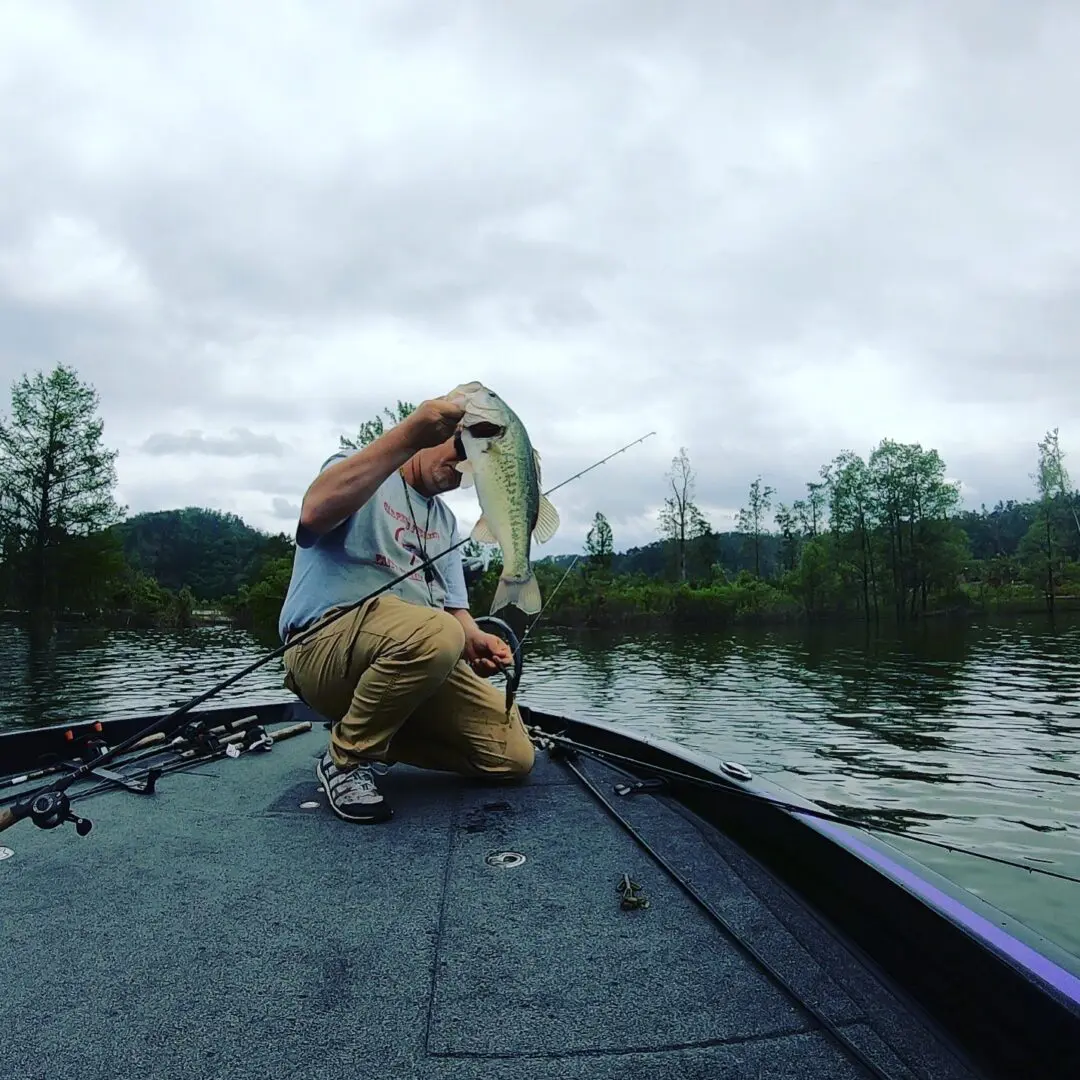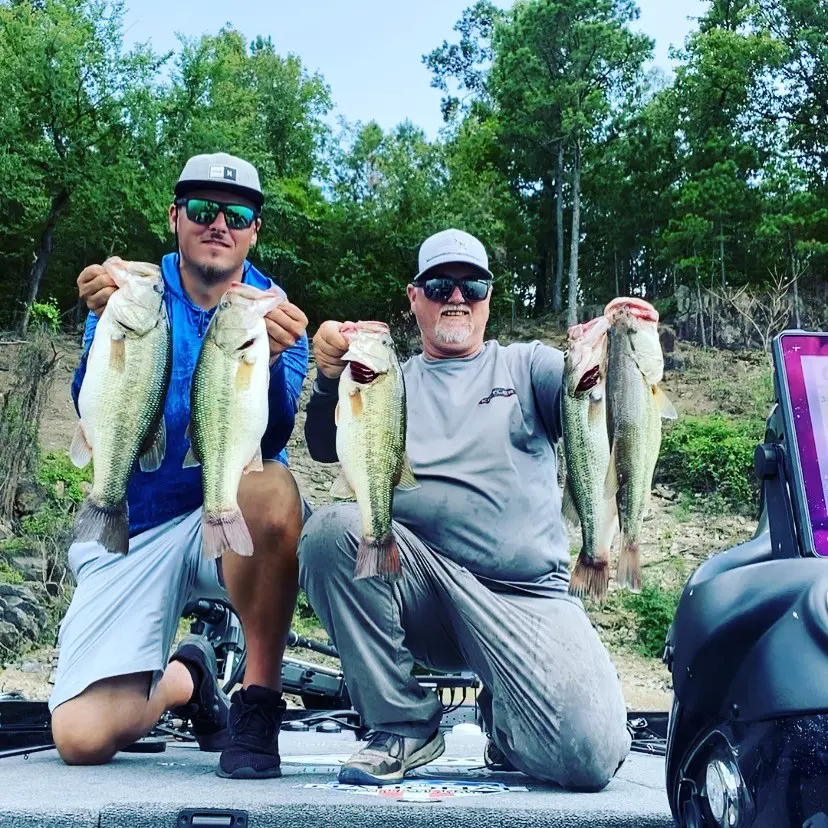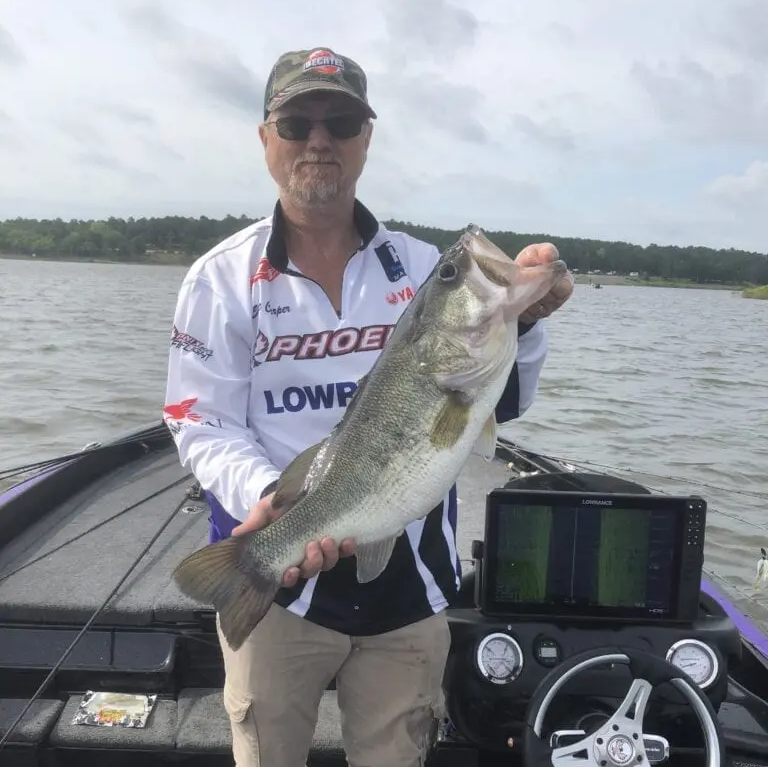Carper's Fishing
Carper's Fishing
Southeast Oklahoma Lakes
Book a Fishing Trip Today to these Beautiful Lakes.

Broken Bow Lake
Target Fish : Largemouth Bass, Smallmouth Bass, Kentucky Spotted Bass, White Bass, Hybrid Stripped Bass, Crappie and Walleye.
Broken Bow Lake was formed in 1968 when the United States Army Corps of Engineers completed the Dam construction on the Mountain Fork River. In 1970 the lake filled to the conservation pool level where it has an average depth of 62 feet and a maximum depth of 185 feet. Broken Bow lake is one of the deepest and clearest lakes in Oklahoma and ranks in the top 10 for scenic beauty in the United States. Broken Bow Lake stretches 22 miles north as it winds its way through the Ouachita Mountain range along the Mountain Fork river drainage path. The timber was cleared in the main lake from conservation pool level 627 feet down to about 587 feet but below that depth much of the timber remains. If you travel up lake a few miles you will begin to see the timber rise above the waters surface. The bottom of the lake is primarily rock which is why it remains clear year around. Occasionally a big rain will add some color to the water but for the most part it will stay clear all year.
Broken Bow has many different species of fish swimming in its clear deep waters. These include Largemouth Bass, Smallmouth Bass, Kentucky-Spotted Bass, Sand Bass, Hybrid Stripped Bass, Black and White Crappie, Walleye and various sunfish as well as Channel, Blue and Flathead catfish.
The best times of the year to fish here are late fall thru early spring. Beginning in late October the bait (shad) starts to migrate into the creeks and most gamefish follow them back. Its a great time to throw walking topwaters and Jerkbaits! Its not unusual to catch 30-50 fish a day this time of year and you'll have the lake to yourself. Moving forward into December the fishing gets even better. January and February are great months to catch fish deep on spoons and Alabama rigs but you can always catch bass on a jig. Finesse Jig's in green, brown and black tipped with a speed craw are always good. Moving into March, the bass and crappie begin moving into shallower water as they prepare to spawn. This is the time of year when you can catch a true world class bass and huge limits of crappie. As we get into April the bass and crappie begin to spawn. In most years the spawn starts around mid month and can last a couple of weeks. In May the fish are transitioning back off shore and into the depths but the fishing is still pretty fair. Moving into the summer months the fish get deep and become much harder to find and catch. You'll need to be looking in 30-40 foot zone to expect to find them in numbers but often times you'll be able to catch them schooling on or near the surface which can be a boat load of fun.
Book a trip today and we will go catch a few!
Pine Creek Lake
Target Fish : Largemouth Bass, White Bass and Crappie
Pine Creek Lake is located approximately 8 miles North of Valliant Oklahoma. The lake was impounded in 1969 by damming up Little river where it hold approximately 3,750 surface acres of water. It has 79 miles of shoreline so it feels a lot bigger than it is. Pine creek is a small lake on a pretty good sized river so it fluctuates a lot. In fact, it may fluctuate more than 40 feet in a given year and rises of 10 or more feet are fairly common. Pine creek is one of the best fisheries in the state and though it doesn't have many bass over 10 pounds, it makes up for it with numbers of 3-5 pound fish. In tournaments its not unusual for the winner to have 25 pounds or more and the top 3-5 places will be over 20 pounds. Pine creek is favored by most local anglers because it is flat full of bass and they are aggressive. If you want to catch crappie, its as good as it gets. The lake is not known for giant crappie, but I commonly catch my 37 fish limit within just a couple of hours. Pine creek is fairly easy to fish as they rarely go deeper than 20 feet in Winter and 10 feet through summer.
Pine creek is a remarkable little lake that is full of fish that are easy to catch all year long.

Hugo Lake
Target Fish: Largemouth Bass and Crappie
Hugo is a lowland impoundment with off-colored water, stumps, and buttonwillow brush. The boat lanes are not marked well, so use caution while navigating. Some of the boat lanes are extremely shallow so, again, caution should prevail. Most of the time, the bass in Hugo stay in waters less than 2 feet deep. This is particularly true in hot weather, as the deeper water holds less oxygen. Use dark-colored creature baits around stumps and in the bushes to locate and catch bass. A square bill crankbait can be dynamite in the rocks on the lower end, and a round-bladed white spinnerbait can result in a ton of fun during the shad spawn from late April to early May. Most years produce a good mayfly hatch that draws crappie and bream into the bushes where the bass are lurking to ambush them. Flipping a creature bait into a flooded bush will result in a broken line if you are not prepared!

McGee Creek
Target Fish: Largemouth Bass
McGee Creek is the premier Big Bass lake of the region. At 3,800 surface acres, it may be small but don't let that fool you into thinking it doesn't have many fish. McGee is managed specifically for trophy bass. Any bass caught between 16 and 22 inches must be returned to the water immediately. Of course it has crappie and other fish but the main attractant is the big bass it holds. Just a few years ago I was fishing a tournament on McGee in May and I caught a bass that weighed 9.85 which was only good for 2nd place.
If you are looking for your personal best, give me a call and lets book a trip.
Sardis Lake
Target Fish: Largemouth Bass and Kentucky Spotted Bass
Sardis Lake is another area lake known for producing large, better-than-average bass. Although bass only need to be 14 inches to be a legal keeper, that hasn't slowed the lake from producing huge bass. It regularly takes well north of 30 pounds to win tournaments here. The lake is full of timber, so caution is advised when navigating. Sardis also has some emergent vegetation that will hold fish beginning in February through the summer months, but I tend to find the larger fish in timber along creek channels, on top of humps, and along the many roadbeds beneath the surface. Throw large Colorado blade spinnerbaits, jigs, chatterbaits, swimbaits, and large 10–12-inch worms for your best opportunity at the larger bass.